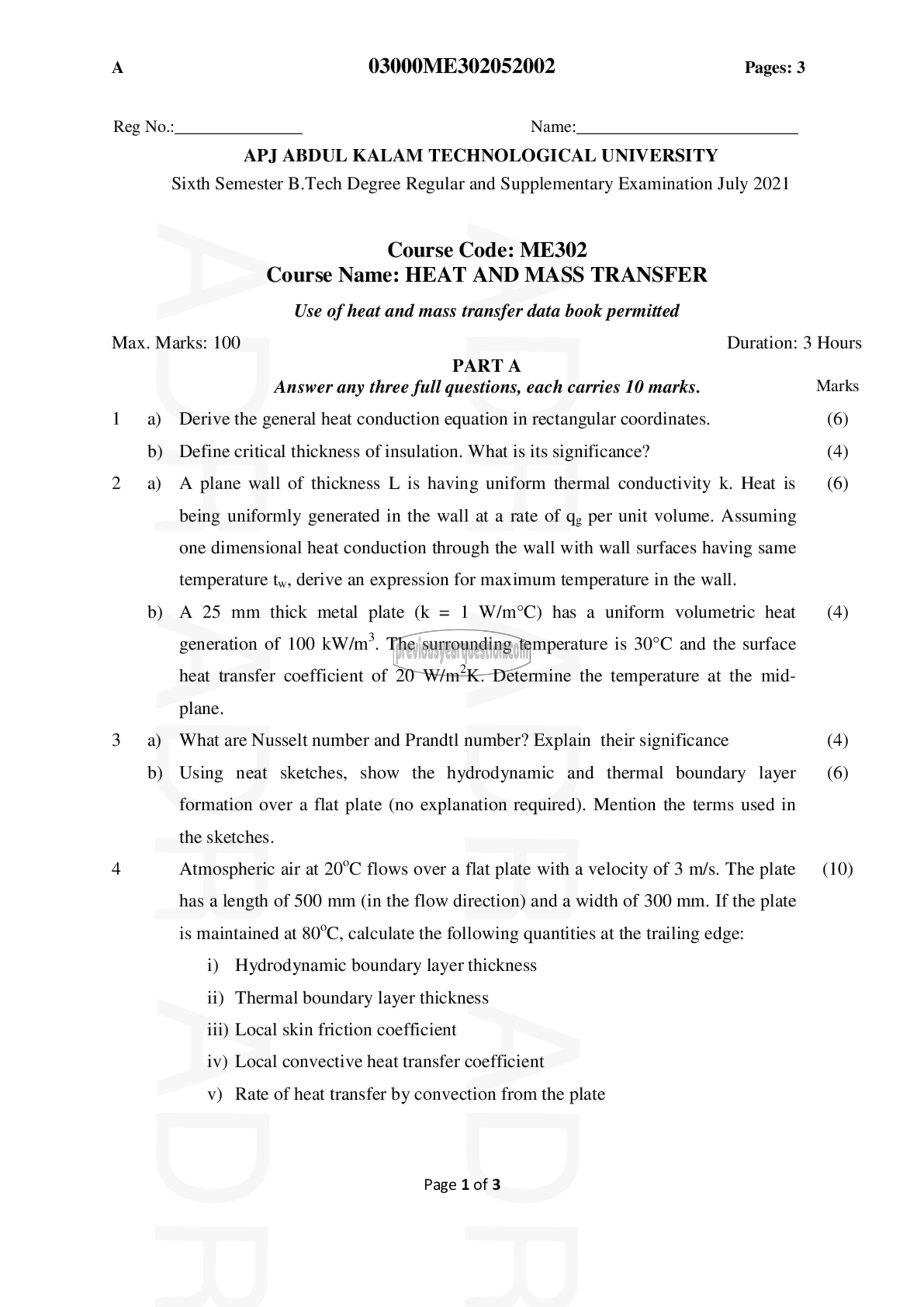APJ ABDUL KALAM TECHNOLOGICAL UNIVERSITY Previous Years Question Paper & Answer
Semester : SEMESTER 6
Subject : Heat & Mass Transfer
Year : 2021
Term : JULY
Branch : MECHANICAL ENGINEERING
Scheme : 2015 Full Time
Course Code : ME 302
Page:1
A 03000ME302052002 Pages: 3
Reg No.: Name:
APJ ABDUL KALAM TECHNOLOGICAL UNIVERSITY
Sixth Semester B.Tech Degree Regular and Supplementary Examination July 2021
Course Code: ME302
Course Name: HEAT AND MASS TRANSFER
Use of heat and mass transfer data book permitted
Max. Marks: 100 Duration: 3 Hours
PARTA
Answer any three full questions, each carries 10 marks. Marks
1 8) Derive the general heat conduction equation in rectangular coordinates. (6)
b) Define critical thickness of insulation. What is its significance? (4)
2 a) A plane wall of thickness L is having uniform thermal conductivity k. Heat is (6)
being uniformly generated in the wall at a rate of ين per unit volume. Assuming
one dimensional heat conduction through the wall with wall surfaces having same
temperature t,, derive an expression for maximum temperature in the wall.
b) A 25 mm thick metal plate (k = 1 W/m°C) has a uniform volumetric heat (4)
generation of 100 kW/m*. The surrounding temperature is 30°C and the surface
heat transfer coefficient of 20 W/m’K. Determine the temperature at the mid-
plane.
3 a) What are Nusselt number and Prandtl number? Explain their significance (4)
b) Using neat sketches, show the hydrodynamic and thermal boundary layer (6)
formation over a flat plate (no explanation required). Mention the terms used in
the sketches.
4+ Atmospheric air at 20°C flows over a flat plate with a velocity of 3 m/s. The plate (10)
has a length of 500 mm (in the flow direction) and a width of 300 mm. If the plate
is maintained at 80°C, calculate the following quantities at the trailing edge:
i) Hydrodynamic boundary layer thickness
ii) Thermal boundary layer thickness
iii) Local skin friction coefficient
iv) Local convective heat transfer coefficient
v) Rate of heat transfer by convection from the plate
Page 1 of 3
